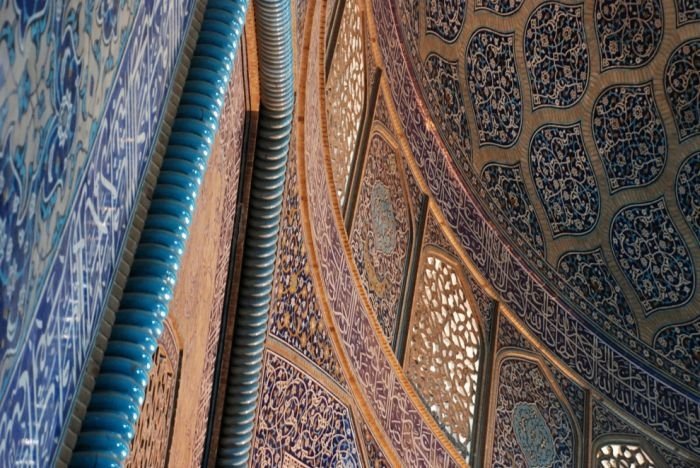|
|
Persian Architecture, Iran
|
Many experts believe the period of Persian architecture from the 15th through 17th Centuries to be the most brilliant of the post-Islamic era. Various structures such as mosques, mausoleums, bazaars, bridges, and different palaces have mainly survived from this period.
Safavi Isfahan tried to achieve grandeur in scale (Isfahan's Naghsh-i Jahan Square is the 6th largest square worldwide) knowledge about building tall buildings with vast inner spaces. However, the quality of ornaments was decreased in comparison with those of the 14th and 15th centuries.
In the old Persian architecture, semi-circular and oval-shaped vaults were of great interest, leading Safavi architects to display their extraordinary skills in making massive domes. Domes can be seen frequently in the structurae of bazaars and mosques, particularly during the Safavi period in Isfahan. Iranian domes are distinguished for their height, proportion of elements, beauty of form, and roundness of the dome stem. The outer surfaces of the domes are mostly mosaic faced, and create a magical view. In the words of D. Huff, a German archaeologist, the dome is the dominant element in Persian architecture.
Another aspect of this architecture was the harmony it presented and manifested with the people, their environment, and their beliefs. At the same time no strict rules were applied to govern this form of Islamic architecture.
|
|









